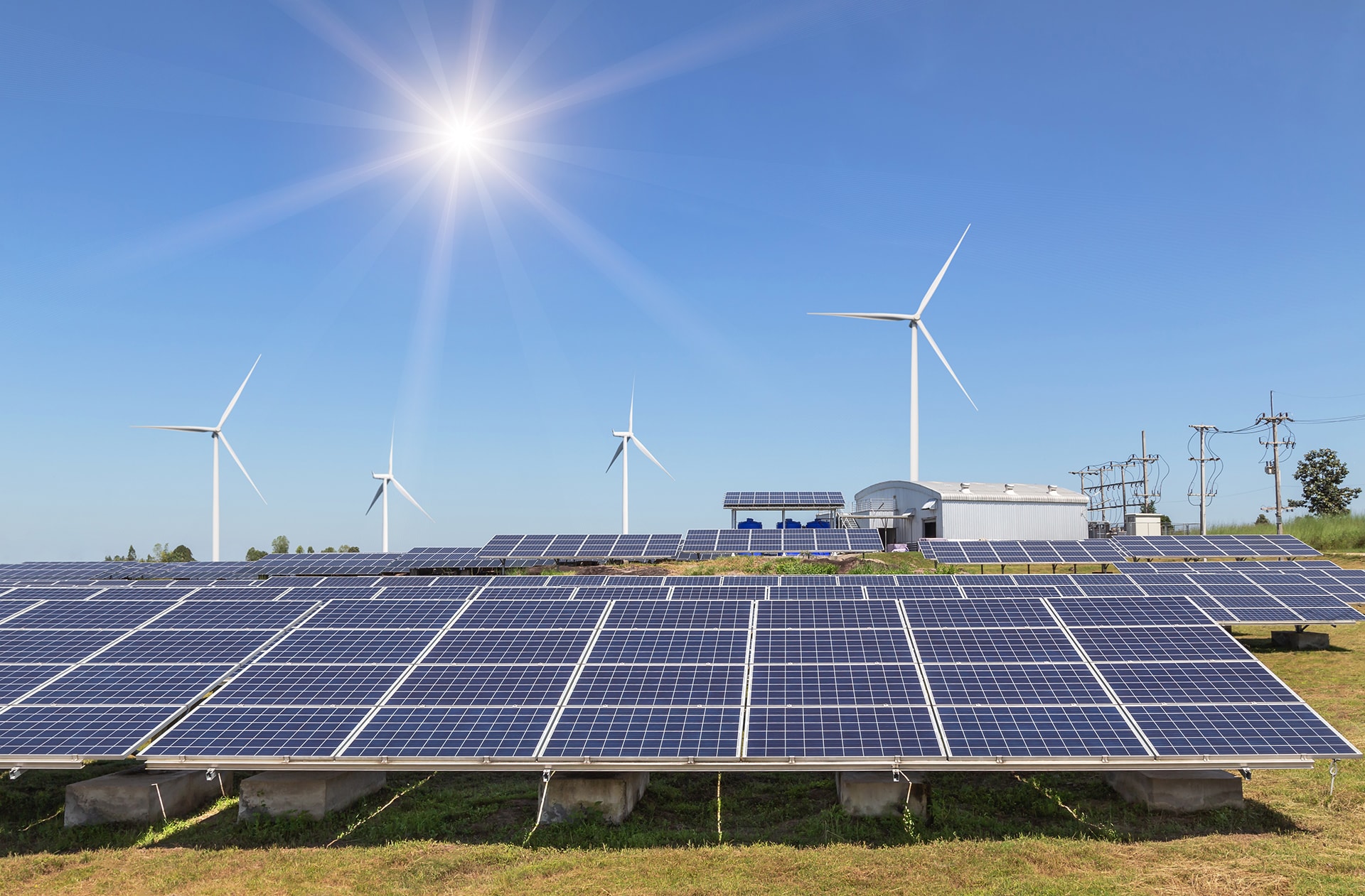The most abundantly available resource on the planet, “Solar energy” is widely regarded as the next step towards a cleaner, greener tomorrow. Solar power plants convert solar energy into electrical energy. There are several types of solar plants, and each type uses different techniques and technology to harness the energy from the sun.
In this article, we’ll discuss the different ways solar power plants perform the function of converting solar energy to electricity.
1. Photovoltaic Plant
I. A solar cell, also known as a photovoltaic cell (PV), usually made of silicon alloys, converts solar energy into electricity. A photovoltaic cell uses the property known as the photoelectric effect exhibited by elements known as metalloids. Photons (particles present in sun rays) strike the photovoltaic cell and cause the release of electrons in the segment by excitation. The excited electrons are captured in a current, producing electricity.
II. Panels of photovoltaic cells come in several forms as well. A crystalline solar panel may be mono or poly, or multi-crystalline silicon. Thin-film solar panels are made from Amorphous Silicon, Cadmium Telluride and Cadmium Sulfide. Although crystalline solar panels are more efficient, they are also more expensive. These panels are often used for domestic purposes.
III. Photovoltaic power plants use large photovoltaic cells to convert solar energy into electricity. Photovoltaic Power plants are a grid of small-scale domestic panels.
IV. Every Solar PV power plant uses numerous panels that generate current with voltages up to 1500V. However, the electricity produced is in DC form. Inverters transform DC (Direct Current) to AC (Alternating Current), which can be supplied to homes. The plant is often connected to an external power grid from where electricity is provided to use points.
V. A monitoring system consisting of integrated information from IoT devices is used to smoothly maintain and operate the power plant.
The Tengger solar park in China’s Zhongwei is the largest Solar PV power plant, covering 1200 km of the desert.
2. Solar Thermal Power Plant
While a PV plant can directly convert solar energy to electricity through the photoelectric effect, Solar Thermal plants use a two-step process to convert solar energy to electric power. As the name suggests, Solar Thermal plants convert solar to thermal energy. Steam turbines are used to convert thermal energy/heat energy to electricity. To put it simply, the heat from the sun is collected and used to produce steam. The steam then feeds into a turbine to generate electricity.
Solar Thermal Power plants are classified into three distinct categories based on the equipment used to collect solar energy:
I. Linear Concentrating System
Linear U-shaped or parabolic reflectors are large mirrors built in the respective shape to concentrate or focus 30-100 times the average sunlight intensity into a collector. These reflectors use the properties of light to capture the energy in light rays at the focal point (determined by the shape of the mirror). Many reflectors are placed in parallel rows in large fields. The collectors, which capture the energy from each reflector, are connected to a central location where high-pressure superheated steam is generated. These mirrors track the sun throughout the day and tilt to the optimum angle to improve efficiency.
These concentrating systems were the first to put solar energy on the conservationist’s radar, with the first plant being SEGS 1 in the Mojave Desert of California. There are currently 7 of these plants in operation.
A variation of this technology is the usage of solar dishes. Solar dishes are much smaller mirrors placed in strategic locations to direct the energy from the sun towards one common focal point. Solar dishes have a higher concentration ratio than linear systems.
II. Solar Power Towers
Solar power towers use several flat sun-tracking mirrors, known as heliostats. These heliostats work in conjugation to concentrate the solar energy onto one central building. The concentrated energy heats the air in the tower, and the heat is then captured in boilers to generate superheated steam that runs the turbines. Several enterprises are developing solar tower technology, and R&D is currently looking into the use of nitrite salts to facilitate heat transfer from the tower to the turbine.
The advantage that solar towers pose is that they can be used even in adverse weather conditions, where hail and sandstorms may cause collateral damage to other types of plants.
The prime example of this type of technology is Germany’s Juelich. Consisting of more than 2000 heliostats and a 200 feet high tower, the plant is an 18000 square kilometre facility.
III. Solar Ponds
Solar ponds are large bodies of saline water that collect and store solar thermal energy, using the phenomena of salinity-gradient. The concept uses convection currents in the ponds to convert solar energy to thermal energy.
Saltwater naturally forms a gradient known as halocline, where low-salt concentration water rises to the top, and high salt-concentration water sinks to the bottom. When solar rays hit the pond, the rays eventually heat the bottom of the pond. This heated water naturally wants to rise. But a solar pond can combat saltwater rising, as high-concentration saltwater wants to sink. Thus a solar pond impedes hot water from rising by using salinity to its advantage. This forms a convection current. When the hot, salty water reaches high temperatures, it is used to run turbines to generate electricity.
As a clean power source, solar energy has unbelievable impetus from governments across the globe in tax rebates and subsidies for initial set-ups. The most integral part of the success of solar plants is that they are easily scalable. Thanks to technological advances, maintaining and operating power plants has become very easy through smart technology and IoT devices. As a result, several apartments, residential complexes, commercial establishments, and institutes are actively springing on the opportunity to save the environment and reduce monthly operation costs for the long term.

